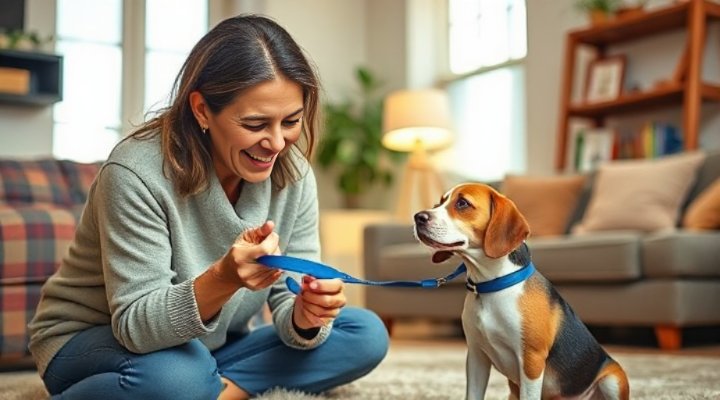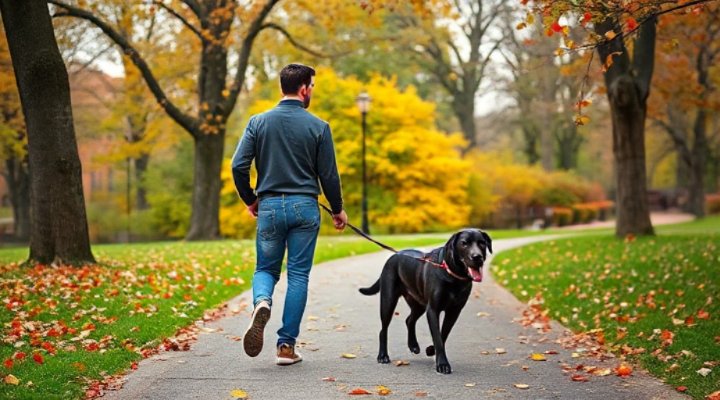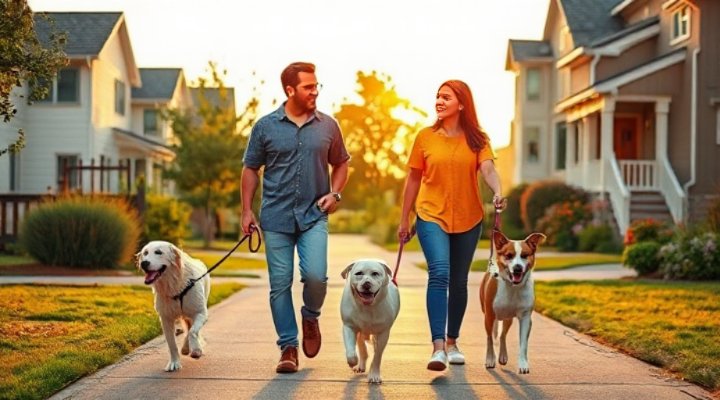Dog leash training is one of the most important skills you can teach your furry companion. Not only does it ensure their safety during walks, but it also makes the experience more enjoyable for both of you. In this comprehensive guide, we’ll cover everything you need to know about helping your dog get comfortable with a leash.

Why Leash Training Matters
Before we dive into the how-to’s, let’s discuss why leash training is so crucial. A well-trained dog on a leash is safer in public spaces, less likely to run into dangerous situations, and more pleasant to walk with. According to the American Veterinary Medical Association, proper leash training can prevent numerous accidents and injuries.
Getting Started with Leash Training
The first step in leash training is introducing your dog to the leash itself. Start by letting them sniff and investigate the leash while it’s not attached. You can find more tips on introducing new equipment in our puppy crate training guide.

Step 1: Positive Association
Create positive associations with the leash by pairing it with treats and praise. When your dog shows interest in the leash, reward them immediately. This positive reinforcement technique is similar to what we recommend in our positive reinforcement training guide.
Step 2: Short Indoor Sessions
Begin with short indoor sessions where you attach the leash and let your dog drag it around (supervised, of course). Gradually increase the time they spend with the leash attached.

Moving to Outdoor Leash Training
Once your dog is comfortable with the leash indoors, it’s time to move outside. Start in a quiet, familiar area with minimal distractions. The American Kennel Club recommends beginning with 5-10 minute sessions and gradually increasing the duration.
Teaching Loose-Leash Walking
The goal of leash training is to achieve loose-leash walking, where your dog walks beside you without pulling. Here’s how to accomplish this:
- Stop moving when your dog pulls
- Reward when the leash is loose
- Change direction frequently to keep your dog attentive

Troubleshooting Common Leash Training Issues
Many dogs develop specific leash-related behaviors that can be challenging. Here are solutions to common problems:
Pulling on the Leash
If your dog pulls, stop walking immediately. Only proceed when the leash is loose. This teaches them that pulling gets them nowhere. For more on correcting unwanted behaviors, check our behavior correction guide.
Fear of the Leash
Some dogs, especially rescues, may be fearful of leashes. Go extra slow with these dogs, using high-value treats and plenty of praise.

Advanced Leash Training Tips
Once your dog has mastered basic leash manners, you can work on more advanced skills:
- Heel command
- Automatic sits at curbs
- Polite greetings with other dogs
Remember, consistency is key in all dog training. For more comprehensive training advice, our best dog training methods article covers additional techniques.
Final Thoughts
Leash training is an ongoing process that requires patience and consistency. With time and positive reinforcement, your dog will learn to walk politely on leash, making your outings more enjoyable for both of you. Don’t forget to celebrate small victories along the way!
Related Keywords: dog walking tips, loose leash walking, how to stop dog pulling, leash training puppy, best leash training methods
